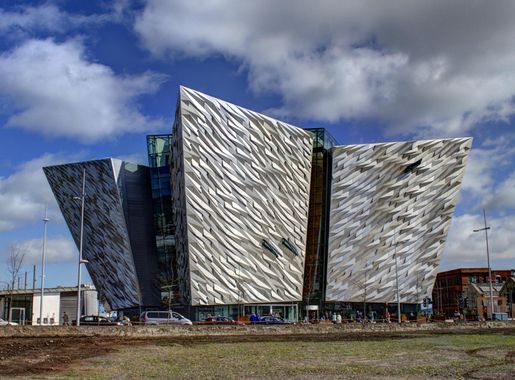
Belfast: The Heartbeat of Northern Ireland
Discover Belfast: A city where history meets modernity, offering rich cultural experiences, scenic beauty, and a vibrant arts scene in the heart of Northern Ireland.
Belfast, the capital of Northern Ireland, is a city rich in history, culture, and scenic beauty. Nestled on the banks of the River Lagan, Belfast has transformed from a vital industrial hub to a vibrant cultural destination. The city's history is deeply intertwined with the shipbuilding industry, most famously known for building the RMS Titanic. Today, the Titanic Belfast museum stands as a testament to this legacy, offering an immersive experience into the ship's ill-fated journey and the city's maritime past. Belfast's charm extends beyond its historical significance. The city is brimming with vibrant neighborhoods, each offering a unique blend of art, music, and cuisine. The Cathedral Quarter is particularly notable, with its cobblestone streets, lively pubs, and an array of street art that tells the story of Belfast's creative spirit. St. George's Market, one of the city's oldest attractions, is a must-visit for food lovers, offering a variety of local produce, artisanal goods, and live music. Nature enthusiasts will find solace in the lush landscapes surrounding the city. The Belfast Hills offer stunning panoramic views and a range of hiking trails. For a more leisurely pace, the Botanic Gardens provide a serene escape with their Victorian-era glasshouses and exotic plant collections. Don't miss a visit to the Ulster Museum, which houses an impressive collection of art, history, and natural sciences, offering a comprehensive look into Northern Ireland's heritage. Belfast is a city that seamlessly blends the old with the new, offering visitors a rich tapestry of experiences. Whether you're exploring its historic streets, enjoying its thriving arts scene, or savoring its culinary delights, Belfast promises a memorable visit.
Local tips in Belfast
- Visit the Titanic Belfast early in the morning to avoid the crowds and fully immerse yourself in the experience.
- Take a Black Cab tour to get an insightful view of Belfast’s political history and its famous murals.
- Explore the Cathedral Quarter at night for a true taste of Belfast's lively pub culture and local music scene.
- If you're planning to visit St. George's Market, go on a weekend to enjoy the full range of stalls and live entertainment.
- Wear comfortable shoes; Belfast is a city best explored on foot to fully appreciate its architecture and hidden gems.
Neighbourhoods in Belfast
Belfast: The Heartbeat of Northern Ireland
Belfast, the capital of Northern Ireland, is a city rich in history, culture, and scenic beauty. Nestled on the banks of the River Lagan, Belfast has transformed from a vital industrial hub to a vibrant cultural destination. The city's history is deeply intertwined with the shipbuilding industry, most famously known for building the RMS Titanic. Today, the Titanic Belfast museum stands as a testament to this legacy, offering an immersive experience into the ship's ill-fated journey and the city's maritime past. Belfast's charm extends beyond its historical significance. The city is brimming with vibrant neighborhoods, each offering a unique blend of art, music, and cuisine. The Cathedral Quarter is particularly notable, with its cobblestone streets, lively pubs, and an array of street art that tells the story of Belfast's creative spirit. St. George's Market, one of the city's oldest attractions, is a must-visit for food lovers, offering a variety of local produce, artisanal goods, and live music. Nature enthusiasts will find solace in the lush landscapes surrounding the city. The Belfast Hills offer stunning panoramic views and a range of hiking trails. For a more leisurely pace, the Botanic Gardens provide a serene escape with their Victorian-era glasshouses and exotic plant collections. Don't miss a visit to the Ulster Museum, which houses an impressive collection of art, history, and natural sciences, offering a comprehensive look into Northern Ireland's heritage. Belfast is a city that seamlessly blends the old with the new, offering visitors a rich tapestry of experiences. Whether you're exploring its historic streets, enjoying its thriving arts scene, or savoring its culinary delights, Belfast promises a memorable visit.
When is the best time to go to Belfast?
Iconic landmarks you can’t miss
Titanic Belfast
Discover the tragic beauty of the Titanic at Titanic Belfast, an immersive museum experience celebrating maritime history and innovation.

Victoria Square
Discover the vibrant shopping and dining experience at Victoria Square, Belfast's iconic shopping center with stunning views and diverse retail options.
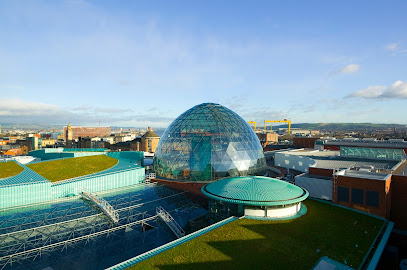
Crumlin Road Gaol Visitor Attraction and Conference Centre
Discover Belfast's rich history at Crumlin Road Gaol, a captivating museum and cultural venue that brings the past to life.
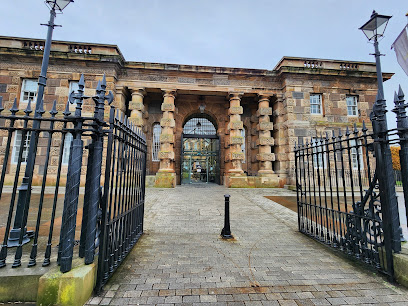
Belfast Castle
Discover Belfast Castle, a stunning 19th-century landmark offering breathtaking views, historical insights, and beautiful gardens in the heart of Northern Ireland.

Grand Opera House
Experience the magic of live performances at the Grand Opera House, Belfast's iconic cultural hub for the performing arts.
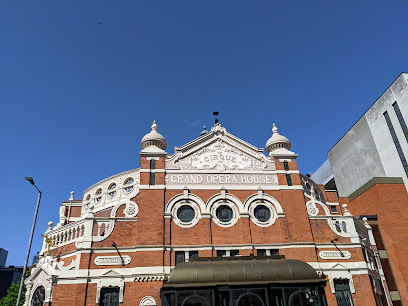
Peace Wall Belfast
Discover the powerful history and vibrant art of the Peace Wall in Belfast, a symbol of resilience and hope for a united future.
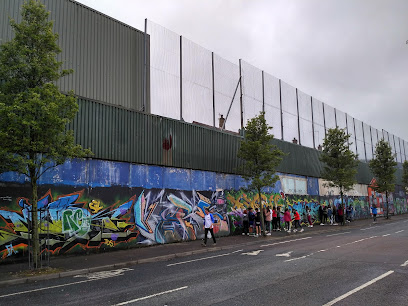
SS Nomadic
Discover the SS Nomadic in Belfast, the last White Star Line ship, and immerse yourself in fascinating maritime history.
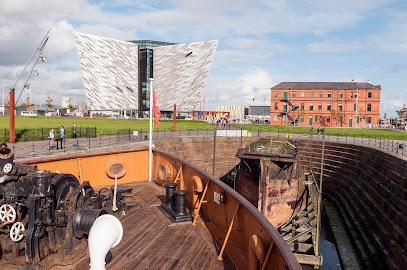
Belfast City Hall
Discover the grandeur of Belfast City Hall, a historical landmark that combines stunning architecture with the rich cultural heritage of Northern Ireland.
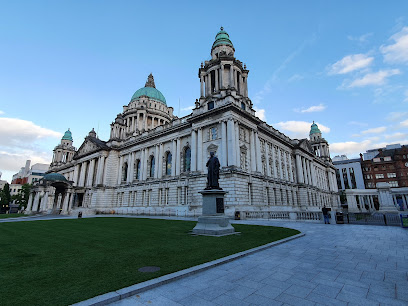
W5
Explore the fascinating world of science at W5, Belfast's interactive museum perfect for families and curious minds.
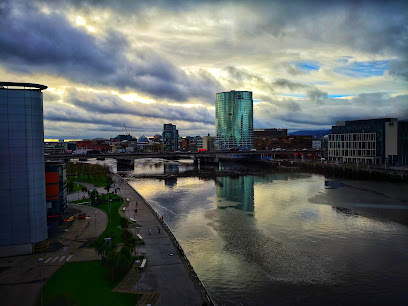
The MAC
Discover the vibrant arts scene at The MAC in Belfast, where contemporary art, live performances, and delicious cuisine come together in one creative hub.
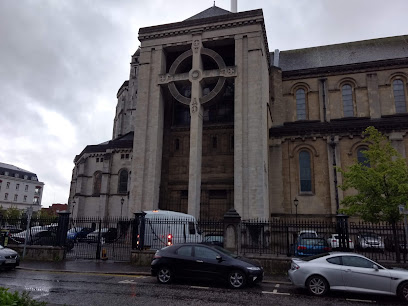
Bobby Sands Mural
Explore the Bobby Sands Mural in Belfast, a powerful symbol of resilience and a significant part of Northern Ireland's rich political history.
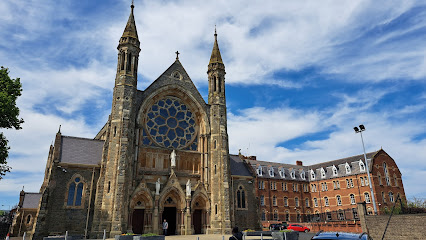
Belfast Cathedral, the Cathedral Church of St Anne
Explore the stunning Belfast Cathedral, a masterpiece of architecture and spirituality, and a key landmark in the heart of Northern Ireland's capital.
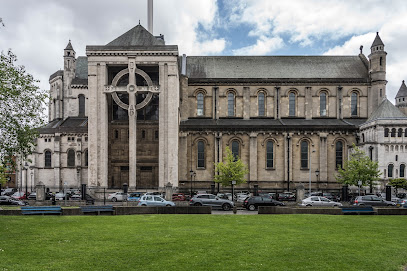
Visit Belfast
Explore Belfast's rich history and vibrant culture at Visit Belfast, the city's official tourist information center, your essential travel guide.
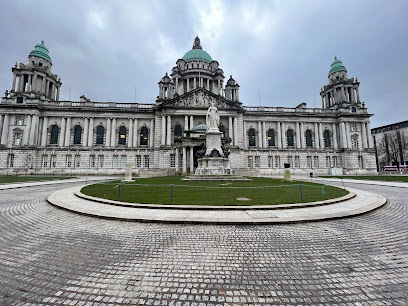
National Trust - Divis and the Black Mountain
Discover breathtaking views and stunning landscapes at Divis and the Black Mountain, a premier hiking destination near Belfast.
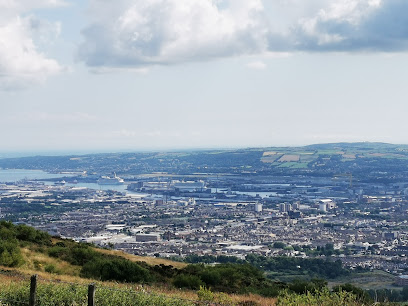
Hop On Hop Off Belfast Bus
Experience Belfast's rich history and vibrant culture with the convenient Hop On Hop Off Bus Tour, tailored for every traveler's adventure.
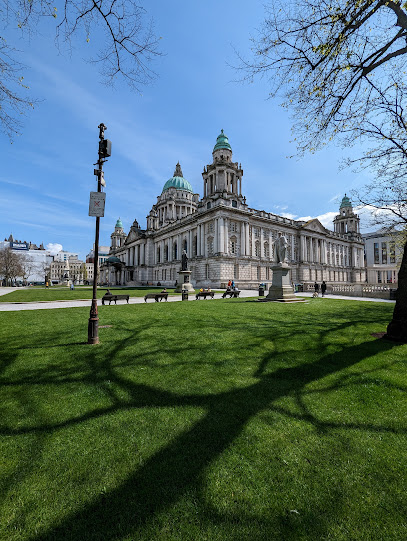
Unmissable attractions to see
Titanic Belfast
Discover the captivating history of the Titanic at Titanic Belfast, an iconic museum showcasing Belfast's maritime heritage and innovation.

St George's Market
Discover the flavors and culture of Belfast at St George's Market, a historic marketplace offering local produce, crafts, and gourmet delights.

Botanic Gardens
Discover the natural beauty and cultural heritage of Belfast at Botanic Gardens, a lush escape filled with stunning flora and engaging community events.
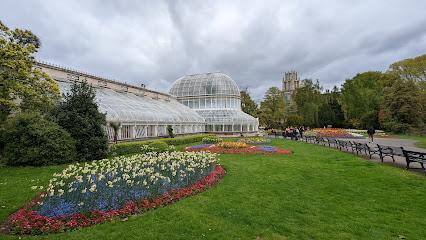
SSE Arena Belfast
Discover the vibrant atmosphere of SSE Arena Belfast, where unforgettable live events and thrilling performances await in Northern Ireland's premier entertainment venue.
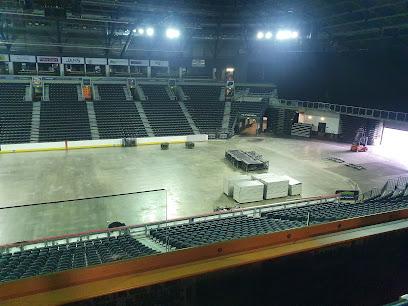
Crumlin Road Gaol Visitor Attraction and Conference Centre
Explore the captivating history of Belfast at Crumlin Road Gaol, a unique museum and event venue that brings the past to life.
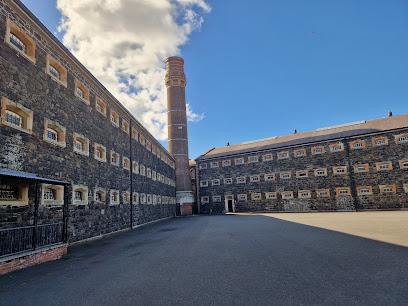
Belfast Castle
Discover the enchanting Belfast Castle, a historic landmark offering stunning views, beautiful gardens, and a glimpse into Northern Ireland's rich heritage.
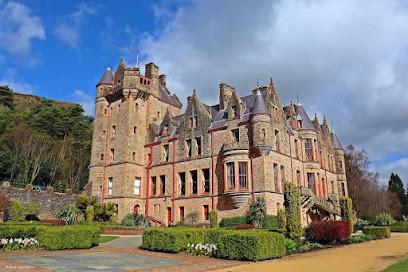
Carrickfergus Castle
Discover Carrickfergus Castle, a medieval fortress rich in history, perched on the beautiful shores of Northern Ireland's Belfast Lough.
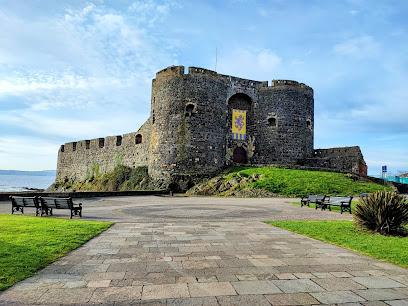
Kelly's Cellars
Discover the heart of Belfast at Kelly's Cellars, a historic Irish pub offering authentic food, craft beers, and live music in a cozy atmosphere.
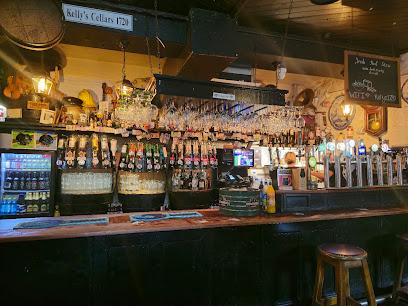
Tollymore Forest Park
Explore Tollymore Forest Park, a natural wonder with breathtaking landscapes, rich wildlife, and outdoor activities in County Down, Northern Ireland.

The Dirty Onion and Yardbird
Discover the heart of Belfast at The Dirty Onion and Yardbird, where traditional Irish cuisine meets a vibrant pub atmosphere.
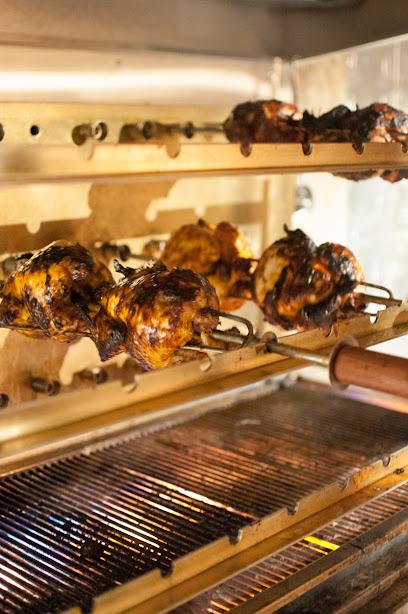
Duke of York
Experience the heart of Belfast's pub culture at Duke of York, a vibrant spot with rich history, local brews, and a warm atmosphere.
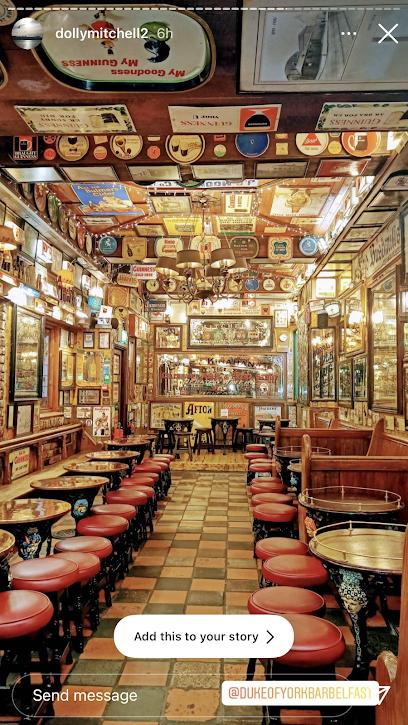
Ulster Museum
Explore the Ulster Museum in Belfast: A gateway to Northern Ireland's rich cultural and historical heritage, featuring art, artifacts, and engaging exhibits.

Belfast Zoo
Experience the rich biodiversity and conservation efforts at Belfast Zoo, a top tourist attraction in Northern Ireland.
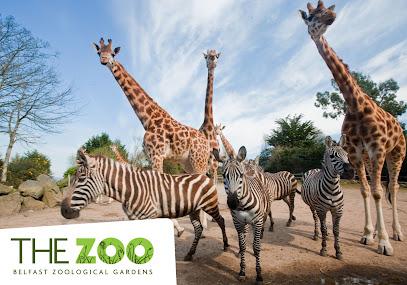
Grand Opera House
Discover the elegance of the Grand Opera House in Belfast, a historical venue offering a diverse range of performances and unforgettable experiences.
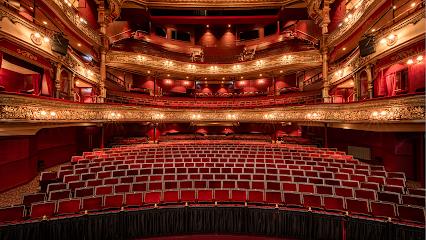
Ormeau Park
Discover the serene beauty of Ormeau Park in Belfast, a lush oasis perfect for relaxation, recreation, and enjoying the great outdoors.
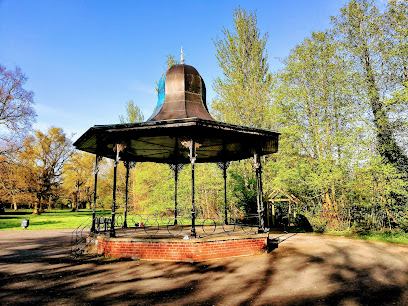
Essential places to dine
The Dirty Onion and Yardbird
Experience authentic Irish hospitality at The Dirty Onion and Yardbird in Belfast – where traditional charm meets modern culinary excellence.
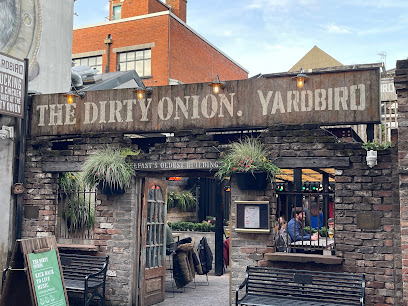
Bootleggers
Experience authentic American cuisine at Bootleggers in Belfast - where burgers meet vibrant nightlife in a welcoming atmosphere.
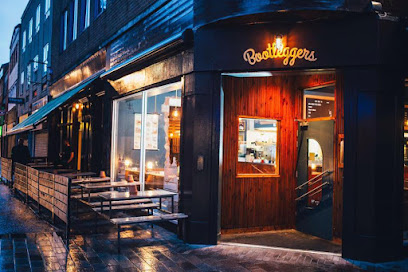
The Northern Whig
Experience Belfast's culinary scene at The Northern Whig – where traditional flavors meet modern dining in an inviting atmosphere.
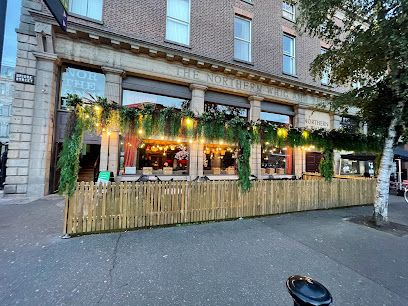
Stix and Stones City Centre
Experience exquisite steaks and authentic Irish cuisine at Stix and Stones City Centre, Belfast's premier dining destination.
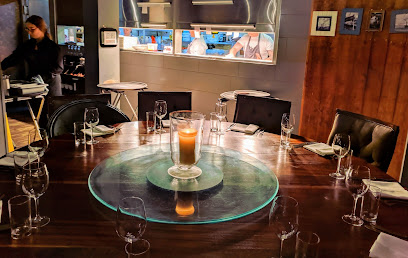
Mourne Seafood Bar
Discover the best seafood dining experience in Belfast at Mourne Seafood Bar - where freshness meets flavor in every bite.
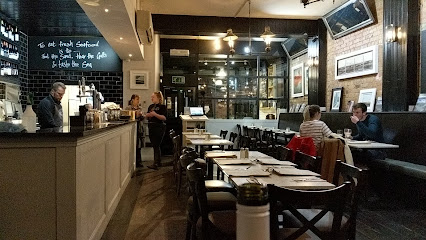
Darcy's Belfast
Discover the heart of Irish cuisine at Darcy's Belfast - where tradition meets taste in a cozy setting.
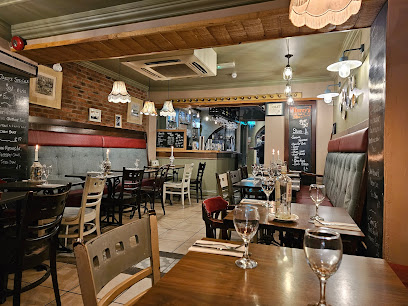
Home Restaurant
Experience the best of modern European cuisine at Home Restaurant in Belfast - where every dish celebrates local flavors and dietary inclusivity.
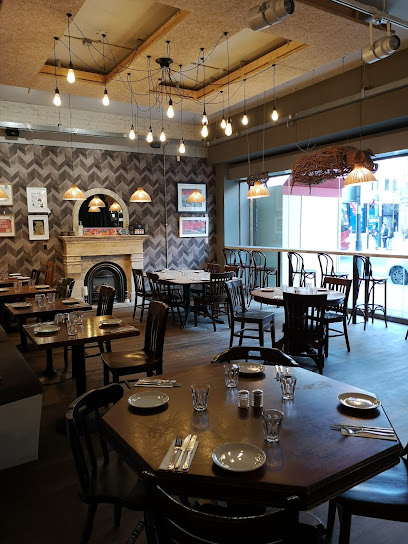
Zen
Experience the serene ambiance and exquisite flavors of Zen – Belfast's premier destination for Asian and Japanese cuisine.

The Rusty Saddle
Experience authentic Northern Irish flavors at The Rusty Saddle – where every meal is a celebration of local ingredients and culinary passion.
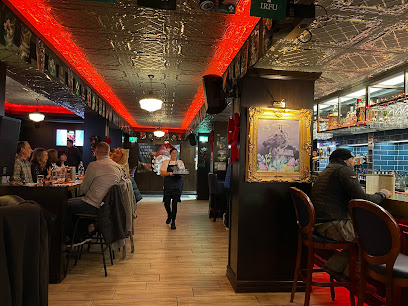
Coppi Restaurant
Indulge in authentic Italian cuisine at Coppi Restaurant - a top-rated spot for pizza and tapas in the heart of Belfast.
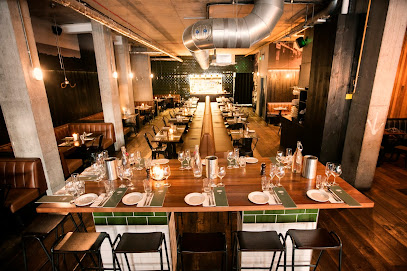
Scalini
Discover authentic Italian cuisine at Scalini in Belfast – where every meal feels like a celebration.
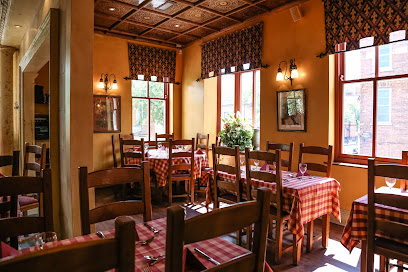
Flame
Experience the best of steak and Asian fusion at Flame in Belfast - where culinary creativity meets quality ingredients.

The Thirsty Goat Belfast
Experience the vibrant atmosphere and delicious grill offerings at The Thirsty Goat in Belfast – where flavor meets fun!
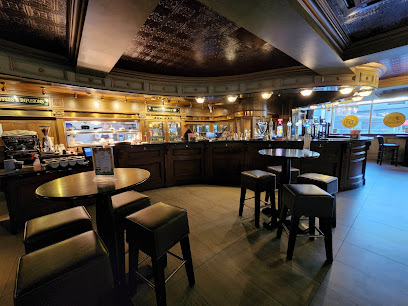
The Chubby Cherub
Experience the essence of Italy at The Chubby Cherub in Belfast - where authentic cuisine meets warm hospitality.
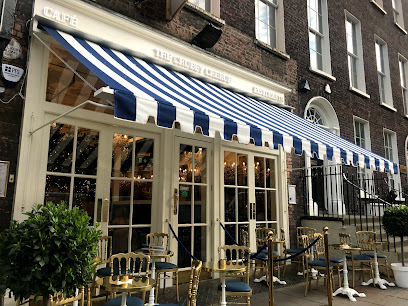
The Ginger Bistro
Experience exquisite modern European cuisine at The Ginger Bistro in Belfast – where local flavors meet contemporary culinary artistry.
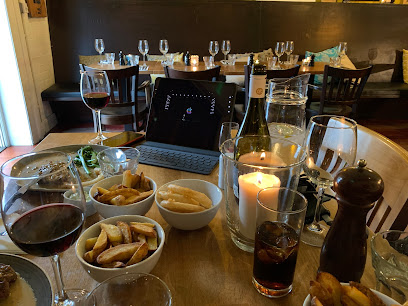
Markets, malls and hidden boutiques
Victoria Square
Experience the vibrant shopping and dining scene at Victoria Square, Belfast's iconic shopping destination with stunning views and diverse retail options.
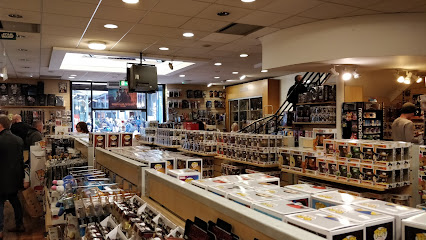
CastleCourt Shopping Centre
Discover Belfast's CastleCourt Shopping Centre - a vibrant hub with over 80 diverse shops and dining options, perfect for every shopper's delight.
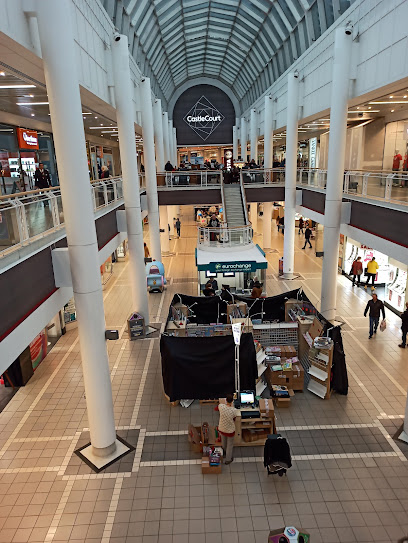
The Kennedy Centre
Explore The Kennedy Centre in Belfast for a unique shopping and entertainment experience, featuring diverse stores, a cinema, and delightful dining options.
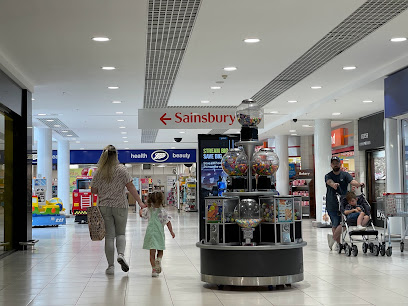
House of Fraser
Explore a world of fashion, beauty, and homeware at House of Fraser, the ultimate shopping destination in Belfast's Victoria Square.
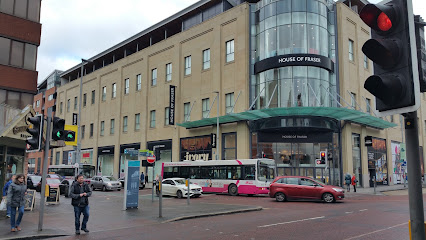
Carrolls Irish Gifts Belfast - Donegall Place
Discover authentic Irish treasures at Carrolls Irish Gifts in Belfast, where every purchase tells a story of culture and heritage.
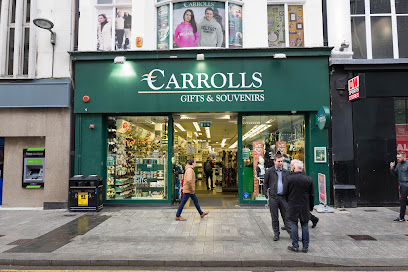
Carrolls Irish Gifts - Belfast
Explore Carrolls Irish Gifts in Belfast, your go-to destination for authentic Irish souvenirs and unique gifts that capture the essence of Ireland.

Build-A-Bear Workshop
Experience the magic of creation at Build-A-Bear Workshop in Belfast, where every stuffed animal holds a story and every visit is a celebration of joy.
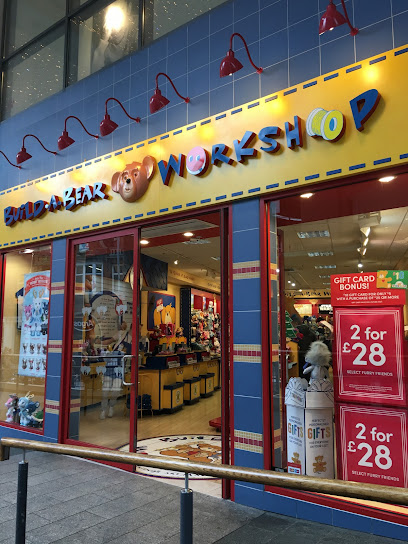
Urban Outfitters
Discover eclectic styles and unique gifts at Urban Outfitters in Belfast, where shopping meets vibrant culture and creativity.
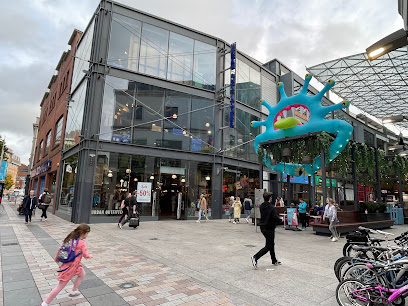
Born and Bred
Discover authentic Irish gifts and souvenirs at Born and Bred, a charming shop capturing the essence of Belfast's rich heritage.
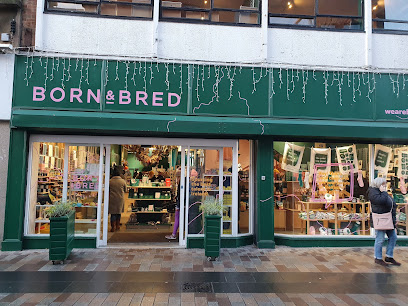
Søstrene Grene
Explore creativity at Søstrene Grene, Belfast's enchanting craft shop offering art supplies, home decor, and unique handicrafts.
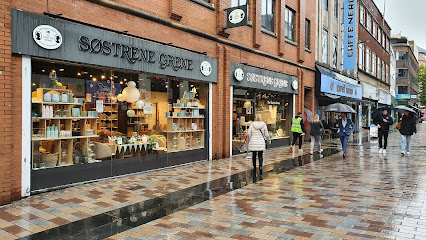
Fossil Store Belfast
Explore Fossil Store Belfast for exquisite gifts including watches, leather goods, and fashion accessories that embody style and sophistication.
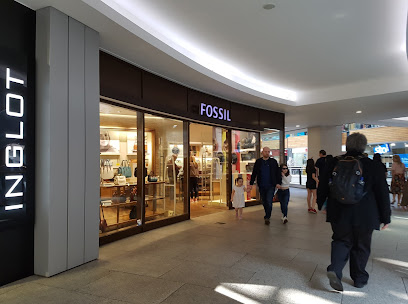
Great Northern Mall
Experience the best of shopping and dining at the Great Northern Mall in Belfast, featuring a unique dome viewing area and a variety of retail options.

The Union Jack Shop
Discover a delightful range of British-themed gifts and souvenirs at The Union Jack Shop in Belfast, perfect for every traveler.
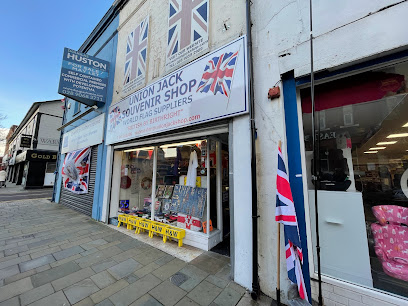
On The Square Emporium
Explore Belfast's hidden gem for antique furniture and collectibles at On The Square Emporium, where history and artistry come alive.
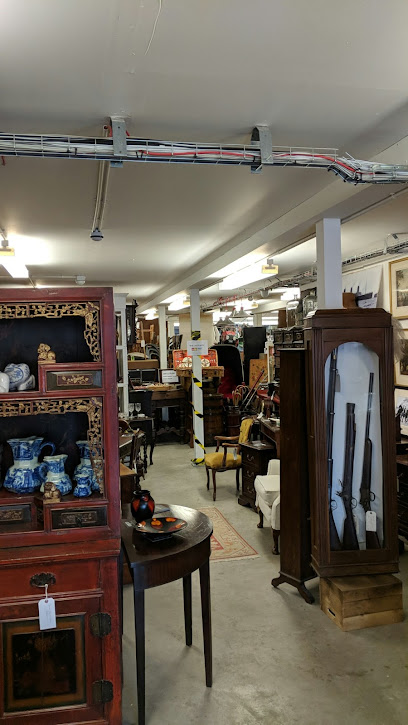
The Yard Shop - Furniture & Accessories
Explore Belfast's The Yard Shop for unique antique furniture, rustic decor, and delightful home accessories that add character to any space.
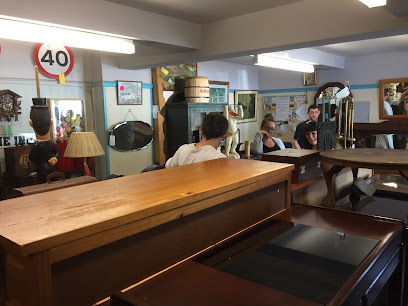
Essential bars & hidden hideouts
Kelly's Cellars
Discover the spirit of Ireland at Kelly's Cellars, Belfast's historic Irish pub blending tradition with a vibrant atmosphere.
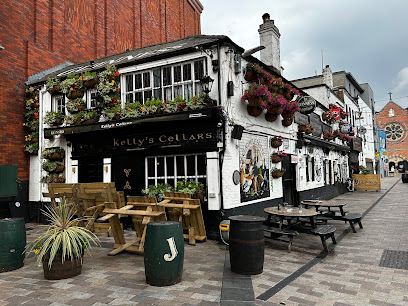
The Dirty Onion and Yardbird
Discover the lively atmosphere and delicious cuisine at The Dirty Onion and Yardbird, a must-visit Irish pub in the heart of Belfast.
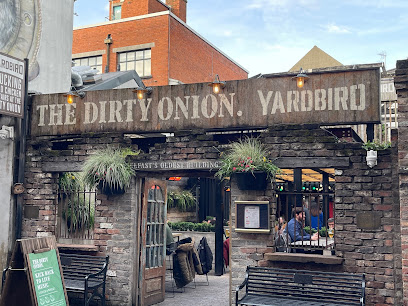
Duke of York
Experience the heart of Belfast at the Duke of York, a historic pub known for its atmosphere, local ales, and vibrant social scene.
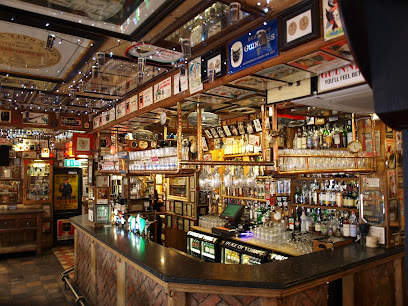
Lavery's
Experience the vibrant culture of Belfast at Lavery's, an iconic pub offering delicious food, local brews, and lively entertainment.
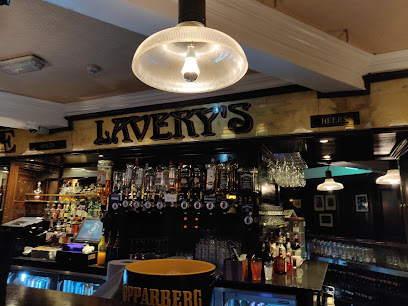
Harp Bar
Discover the heart of Belfast nightlife at Harp Bar, where live music and a welcoming atmosphere create unforgettable moments.
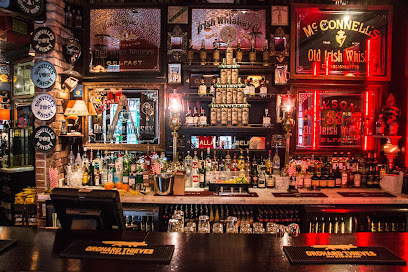
The Garrick
Discover the vibrant atmosphere and rich flavors of Belfast at The Garrick, a beloved pub offering authentic Irish hospitality and live entertainment.
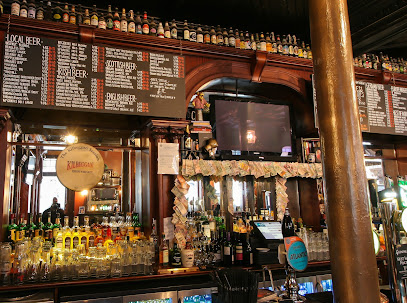
Sunflower Public House
Experience the local charm at Sunflower Public House, Belfast's vibrant pub known for its craft beers and community spirit.
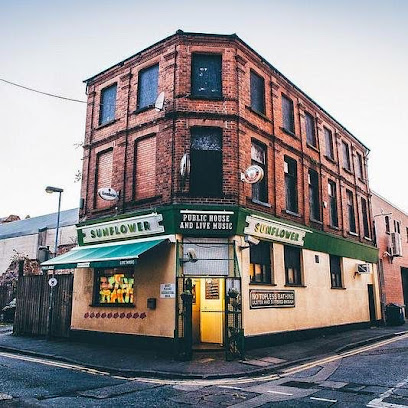
Whites Tavern
Discover the historic charm of Whites Tavern, Belfast's iconic Irish pub offering great food, drinks, and live music in a cozy atmosphere.

Filthy McNastys
Discover the vibrant nightlife of Belfast at Filthy McNastys, where live music and great drinks create an unforgettable experience.
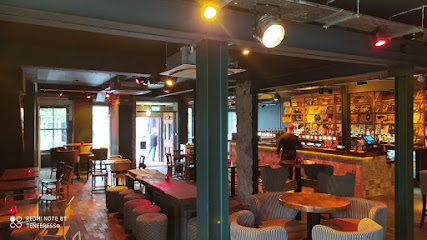
The Cloth Ear
Experience the heart of Belfast's pub culture at The Cloth Ear, where exquisite food meets a vibrant atmosphere and local charm.
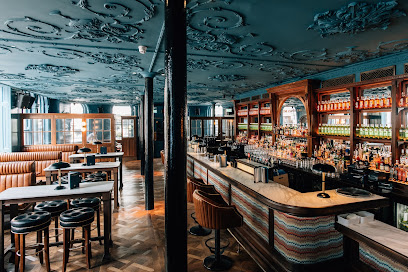
The Spaniard
Experience the vibrant atmosphere and rich flavors at The Spaniard, Belfast's beloved pub, where every visit is a celebration of local culture.
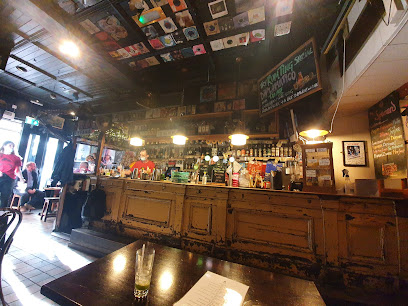
Maddens
Discover the vibrant atmosphere of Maddens, a must-visit pub in Belfast offering delicious food, local brews, and traditional Irish hospitality.
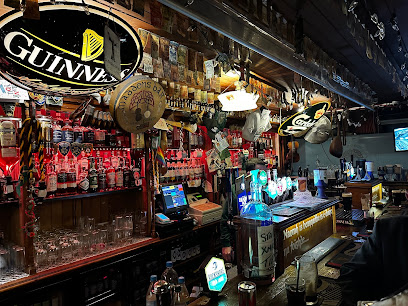
Henry's
Immerse yourself in the vibrant culture of Belfast at Henry's, a pub offering live music, delicious food, and a warm atmosphere for all.
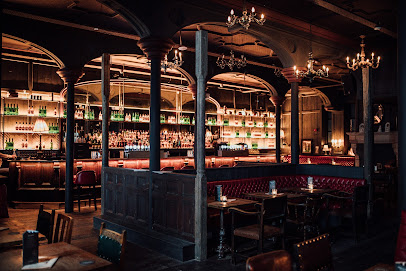
Bert's Jazz Bar
Discover the vibrant jazz scene and exquisite dining experience at Bert's Jazz Bar in Belfast, where every night is a celebration of music and flavor.

The Perch Rooftop Bar
Experience Belfast from above at The Perch Rooftop Bar, where exceptional cocktails meet breathtaking skyline views.
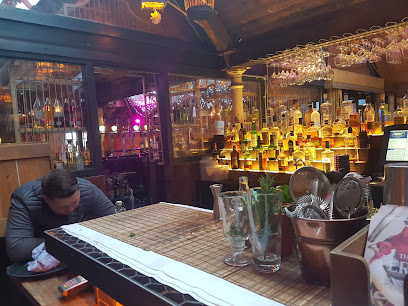
Local Phrases
-
- HelloHiya
[hi-ya] - GoodbyeCatch ye laters
[catch yee lay-ters] - YesAye
[aye] - NoNaw
[naw] - Please/You're welcomePlease/No bother
[please/no bah-ther] - Thank youCheers
[cheers] - Excuse me/SorrySorry/Ma bad
[sorry/ma bad] - How are you?How's she cuttin'?
[hows she cut-tin] - Fine. And you?Grand. Yerself?
[grand. yer-self] - Do you speak English?Can ye speak English?
[can yee speak english] - I don't understandI'm pure scundered
[i'm pure scun-dered]
- HelloHiya
-
- I'd like to see the menu, pleaseWill ye hand me the menu, please?
[will yee hand me the menu, please] - I don't eat meatI'm veggie
[i'm veg-gie] - Cheers!Sláinte!
[slahn-che] - I would like to pay, pleaseI'll settle up, please
[i'll settle up, please]
- I'd like to see the menu, pleaseWill ye hand me the menu, please?
-
- Help!Help!
[help] - Go away!Away on!
[away on] - Call the Police!Ring the peelers!
[ring the peel-ers] - Call a doctor!Get a quack!
[get a quack] - I'm lostI'm gone astray
[i'm gone astray] - I'm illI'm pure wick
[i'm pure wick]
- Help!Help!
-
- I'd like to buy...I want tae get...
[i want tae get] - I'm just lookingI'm just havin' a dander
[i'm just havin' a dan-der] - How much is it?Hoo much is it?
[hoo much is it] - That's too expensiveThat's pure dear
[that's pure deer] - Can you lower the price?Can ye gie us a dander on the price?
[can yee gee us a dan-der on the price]
- I'd like to buy...I want tae get...
-
- What time is it?Hoo late is it?
[hoo late is it] - It's one o'clockIt's one on the nose
[it's one on the nose] - Half past (10)Half ten
[half ten] - MorningMornin'
[morn-in] - AfternoonThe back of two
[the back of two] - EveningThe gloamin'
[the gloamin] - YesterdayYest'day
[yes-t'day] - TodayThe day
[the day] - TomorrowMorn
[morn] - 1Aye
[aye] - 2Twa
[twa] - 3Thrae
[thray] - 4Fower
[fow-er] - 5Fife
[fife] - 6Sax
[sax] - 7Seiven
[seiv-en] - 8Ach
[ach] - 9Noin
[noin] - 10Tain
[tain]
- What time is it?Hoo late is it?
-
- Where's a/the...?Where's the...?
[where's the] - What's the address?Where's the gaff?
[where's the gaff] - Can you show me (on the map)?Can ye gie us a look on the map?
[can yee gee us a look on the map] - When's the next (bus)?When's the next bus due?
[when's the next bus due] - A ticket (to ....)A ticket til...
[a ticket til]
- Where's a/the...?Where's the...?
History of Belfast
-
Belfast, the capital city of Northern Ireland, traces its roots back to the early medieval period. The name 'Belfast' is derived from the Irish 'Béal Feirste,' meaning 'mouth of the sandbank ford.' Early settlements in the area can be traced to the 7th century. By the 12th century, the Normans had built a fort near the River Lagan, paving the way for further development.
-
The early 17th century saw significant change for Belfast with the Plantation of Ulster, initiated by King James I. This policy encouraged the settlement of English and Scottish Protestants, leading to the establishment of the town as a more structured community. The arrival of these settlers significantly influenced the cultural and economic landscape of Belfast.
-
The Industrial Revolution brought rapid growth to Belfast in the 19th century. The city became a major center for linen production, earning it the nickname 'Linenopolis.' Shipbuilding also flourished, with the Harland and Wolff shipyard becoming one of the most significant in the world. This period of prosperity saw Belfast transform into a bustling urban center.
-
One of the most famous chapters in Belfast's history is the construction of the RMS Titanic. Built by Harland and Wolff, the Titanic was the largest and most luxurious ship of its time. The ship was launched in 1911, and although its maiden voyage ended in tragedy in 1912, it remains a potent symbol of Belfast’s shipbuilding heritage.
-
The latter half of the 20th century for Belfast was marked by 'The Troubles,' a period of intense sectarian conflict between Nationalists (mainly Catholic) and Unionists (mainly Protestant). Starting in the late 1960s and lasting until the Good Friday Agreement in 1998, this period saw significant violence and political instability, deeply impacting the city's social fabric.
-
Following the Good Friday Agreement in 1998, Belfast began a journey of peace and reconciliation. The city has since undergone significant redevelopment and regeneration. Landmarks such as the Titanic Belfast, a visitor center dedicated to the ill-fated ship, and the revitalized Cathedral Quarter, have become symbols of the city's modern renaissance and cultural revival.
-
Modern-day Belfast is a vibrant city known for its rich cultural heritage. Annual events such as the Belfast International Arts Festival and the Féile an Phobail celebrate the city's artistic and cultural diversity. The city’s music scene, ranging from traditional Irish music to contemporary genres, continues to thrive, reflecting Belfast's dynamic and evolving cultural identity.
Belfast Essentials
-
Belfast, the capital of Northern Ireland, is accessible by various means. Belfast International Airport (BFS) is located approximately 20 kilometers northwest of the city center and serves numerous international and domestic flights. George Best Belfast City Airport (BHD) is closer to the city center and caters to regional flights. Additionally, Belfast is well-connected by ferry services from Scotland and England, with Stena Line and P&O Ferries operating regular routes. Train services from Dublin to Belfast, operated by Irish Rail and Northern Ireland Railways, offer a scenic and comfortable journey.
-
Belfast offers a range of transportation options. The city has an extensive bus network operated by Translink, with Metro buses serving the city and Ulsterbus providing regional connections. The Glider bus rapid transit system is a convenient way to navigate through the city. Taxis are readily available, and ride-sharing services like Uber operate in Belfast. For those preferring to drive, car rental services are available at the airports and various locations in the city. Belfast is also very walkable, with many attractions within easy walking distance.
-
The official currency in Belfast is the British Pound Sterling (GBP). Credit and debit cards are widely accepted in hotels, restaurants, shops, and other establishments. Contactless payments are also common. ATMs are plentiful throughout the city, and currency exchange services are available at airports and in various locations in the city center. It's advisable to carry some cash for smaller transactions or in places where card payments might not be accepted.
-
Belfast is generally a safe city for tourists, but it's wise to take standard precautions. Areas such as the Falls Road and Shankill Road have historical significance related to The Troubles and can be sensitive, particularly during certain times of the year. It's best to visit these areas as part of a guided tour. Avoid walking alone at night in unfamiliar areas and keep an eye on your belongings in crowded places. The city center and popular tourist spots are monitored and generally safe, but always stay vigilant.
-
In case of emergency, dial 999 for police, fire, or medical assistance. Belfast has several hospitals with emergency departments, including the Royal Victoria Hospital and the Belfast City Hospital. Pharmacies are available throughout the city for minor health issues. It's recommended to have travel insurance that covers medical emergencies. The Police Service of Northern Ireland (PSNI) operates throughout the city, and their presence ensures a prompt response to any incidents.
-
Fashion: Do dress in layers as the weather can be unpredictable. Casual attire is generally acceptable, but consider dressing more formally for fine dining or theatre visits. Religion: Do respect religious sites and practices. Many churches and cathedrals are open to the public, and modest dress is appreciated. Public Transport: Do have exact change or a contactless payment method for buses. Don't eat or drink on public transport. Greetings: Do greet people with a friendly 'hello' or 'hi.' A handshake is common in formal settings. Eating & Drinking: Do try local specialties like Ulster Fry, soda bread, and Irish stew. Don't forget to tip in restaurants; around 10-15% is customary if service is not included.
-
To experience Belfast like a local, explore the vibrant St. George's Market, open on weekends, offering local produce, crafts, and live music. Take a walk along the River Lagan and visit the Titanic Quarter to learn about the city's shipbuilding heritage. Enjoy a pint at a traditional pub like The Crown Liquor Saloon, one of the oldest in Belfast. Participate in local events and festivals, such as the Belfast Film Festival or the Cathedral Quarter Arts Festival, to immerse yourself in the city's cultural scene.
Trending Landmark in Belfast
-
Titanic Belfast
-
Victoria Square
-
Crumlin Road Gaol Visitor Attraction and Conference Centre
-
Belfast Castle
-
Grand Opera House
-
Peace Wall Belfast
-
SS Nomadic
-
Belfast City Hall
-
W5
-
The MAC
-
Bobby Sands Mural
-
Belfast Cathedral, the Cathedral Church of St Anne
-
Visit Belfast
-
National Trust - Divis and the Black Mountain
-
Hop On Hop Off Belfast Bus
Nearby Cities to Belfast
-
Things To Do in Peel
-
Things To Do in Kirk Michael
-
Things To Do in Port Erin
-
Things To Do in Port St Mary
-
Things To Do in Derry
-
Things To Do in Ballasalla
-
Things To Do in Castletown
-
Things To Do in Drogheda
-
Things To Do in Ramsey
-
Things To Do in Douglas
-
Things To Do in Onchan
-
Things To Do in Laxey
-
Things To Do in Dublin
-
Things To Do in Bray
-
Things To Do in Sligo




